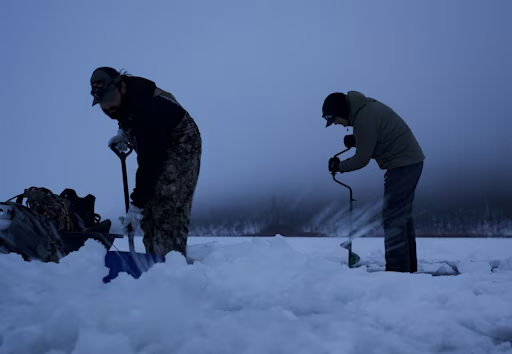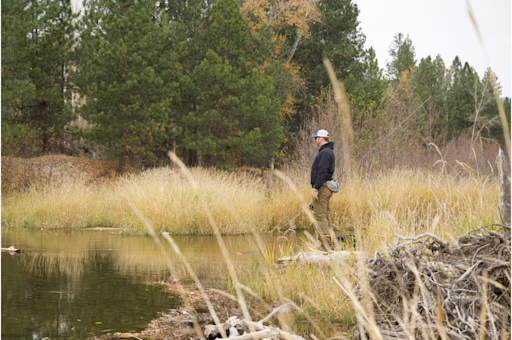Fishbrain's guide to snook
Learn about where to target, which bait to use and the gear needed to catch snook in Florida. Snook are one of the most readily found and exciting fish to fight in Florida and we cover night fishing, live baits, lures, line selections and more.
Share this article

Snook are one the most readily found and exciting fish you can catch in Florida.

Snook will run in both fresh and saltwater, making them easily found. But just because they are easily found does not mean they are always easy to catch. Snook are an intelligent fish that can be quite leader shy, picky eaters and, like many fish, require far different tactics when targeting a big one.
If you haven’t had the chance to cast for this great species yet, put Florida snook fishing high on your to do list this year.
Follow along for some of our tried and true tips for landing the fish of a lifetime the next time you go Florida snook fishing.
Targeting sea walls

Snook use incoming tides to ambush baitfish and seawalls work perfectly for this. During an incoming tide, snook will use docks and other structure, to hide as they wait for the incoming current to push bait into the walls, setting up an ambush opportunity. When the sun is high and the tide is right, try flipping a live pilchard, greenback, or pinfish, just on the edge of the shadows of a dock, or tree along a seawall and wait.
Depending on your supply, you can even throw a handful of bait up against a seawall, creating a bit of a frenzy. Snook won't want to attack a single baitfish too far from the shadow line, but a handful may create a bit of a frenzy. As soon as the frenzy subsides a bit, get your hook in the water, close to that shadow line and the seawall. The action from the handful of bait will make any lurking snook, bolder and more aggressive.
The day fisherman and the night fisherman

Targeting fish at night is a tried and true concept for a lot of anglers. Catfish, brown trout and even tarpon are all active at night, especially large ones. Florida snook are no different. When you find good ocean access that looks promising, you need to decide if you want to be out during the day, or burning the midnight oil.
For night fishing there are two good strategies. Lighted docks are a prime place to target snook at night. Dock lights will inherently attract insects to the surface of the water, which inevitably attract balls of baitfish. The bigger a snook gets, the lazier it gets and these bait balls at night are a buffet waiting to happen. Florida snook will cruise through lazily and then hammer these bait balls. If you can't see into the water, it will also help to listen for thrashing water, which may indicate a large snook in a feeding frenzy.
Big snook will also stack around inlets and bridges, perfect for ambushing baitfish riding the tides. Large snook don't have many predators, but bridges and inlets can provide the cover needed to avoid those they do have, like sharks and dolphins.
On incoming and outgoing tides, big snook can hide behind their cover and wait for baitfish to pass by riding a tide, much like the way trout sit in slack water waiting for insects to come by on a current.
The early bird gets the snook

At daybreak snook are often found cruising flats and in the surf of beaches looking for baitfish. The early mornings when the sun is not overhead allow snook to move without worrying too much about another aerial predators like osprey. The shallows of the surf keep them safe from aquatic predators while allowing them to use the beach to pin down baitfish like greenbacks.

Mangroves are another great spot to target. Florida snook use tunnels throughout the thick mangrove roots to move easily, while keeping them safe. The roots also provide cover for prey species. Snook will often be hesitant to leave these tunnels, so getting your bait, or lure as close to the mangroves as possible (easier said than done) is key as they wont leave their cover for a bait deemed too far away.
Fighting snook
Snook have sharp gill plates and tail fins. Extra-long fluorocarbon carbon leader, in the 20 pound range, will give you the abrasion resistance needed to hold up against a tail fin, or gill plate, when the fish turns.
Gear

If you are strictly fishing at night you can go all the way up to 60- 80 pound line with a 100 pound leader when specifically targeting large snook. During the day, you need a lighter line that won't stand out prominently. Go lighter y with a 20-30 pound braid with a 25-30 pound fluorocarbon leader.
Highly visible lines will help during a fight. When fishing mangroves for example, lower vis lines are harder to see in the light of the day. An angler needs to keep a sharp eye on their line in these areas to steer their fish away from the root tunnels where they risk losing them, breaking their line, or getting snagged.
Braided line should always be your bread and butter. Braided line has a thinner diameter, which lets you put more on your reel than mono. You can’t power a large snook in while it's on a long run. You need to let it take line and a large snook can take you 400 yards.

As long as you wash your reel, braided line will also hold up longer in the salt compared to mono.
A general rule for saltwater fishing is if your leader gets scraped or scuffed by a fish, or structure replace it. Not only will the leader be weakened to the point of breaking on a big fish, but it will begin to show white, which can scare fish.
You should always go line to line and avoid swivels when connecting your line to your leader.
Swivels can attract other species and enticing fish to strike at the swivel instead of your bait.
Line to line is also a stronger connection with direct pull compared to a swivel. Line to line makes only one knot which represents the weakest point in your connection, opposed to two knots with a swivel. Line to line also provides some stretch, while the metal on a swivel provides none.. Swivels also create more snag points that can get caught on structures like bridge pylons, or mangroves
Albright knots, surgeon's knots, blood knots are all great options for connecting line to line and should be in every angler’s repertoire.
Bait

Cut bait works great when fishing water with a current, or a tide. A chunk of ladyfish on a hook has caught many a snook in Florida, but nothing beats live bait like live greenbacks, pinfish or scaled sardines.
Cast nets are a great asset to those using live bait. Throwing a cast net within a mile of where you are fishing will clue you in even more on what predatory fish are feeding on.
Green and white combo bucktail jigs are a dangerous artificial lure for snook, as well. Green and white are great combo patterns as they match most shallower waters where snook can be found during the day. Even with this clue, however, live bait isn't always guaranteed to match what a snook is in the mood for. Changing your game plan and being flexible is a must.
If you're throwing a live greenback right on one’s head and still not getting any interest, it's time to switch things up and go to cut bait, or a lure that provides a bit more flash.
Snook size limits and seasons for harvest should also be closely monitored. Make sure and use Fishbrain’s partner app, Fish Rules to find seamless information regarding fishing regulations wherever you are.
If you have never had the pleasure of tangling with (anything but) common snook, drop what you are doing, sell your furniture, if need be, and get down to Florida. Couches and coffee tables come and go, but you only get to catch your first snook once. Plus you can probably find some milk crates to sit on later.
Now let’s go fishing. We'll bring the bucket of greenbacks.
If you haven't experienced the #1 fishing app worldwide, make sure and check out Fishbrain to see all the fish data, fishing spots, weather conditions you've been missing out on plus much more.

Download the Fishbrain app and access the best fishing spots in your area
Related blog posts
Master the hardwater season with advanced ice fishing tips . Learn how to find fish faster, refine your search and adjust presentations to catch more fish all winter long.

Your guide to Victoria’s best fish to catch in rivers, lakes, and coastal waters. Learn prime species, fishing tips, and key regulations

Learn how fish adapt as water temperatures cool from autumn to winter, including changes in behavior, metabolism, and habitat that help them survive.




